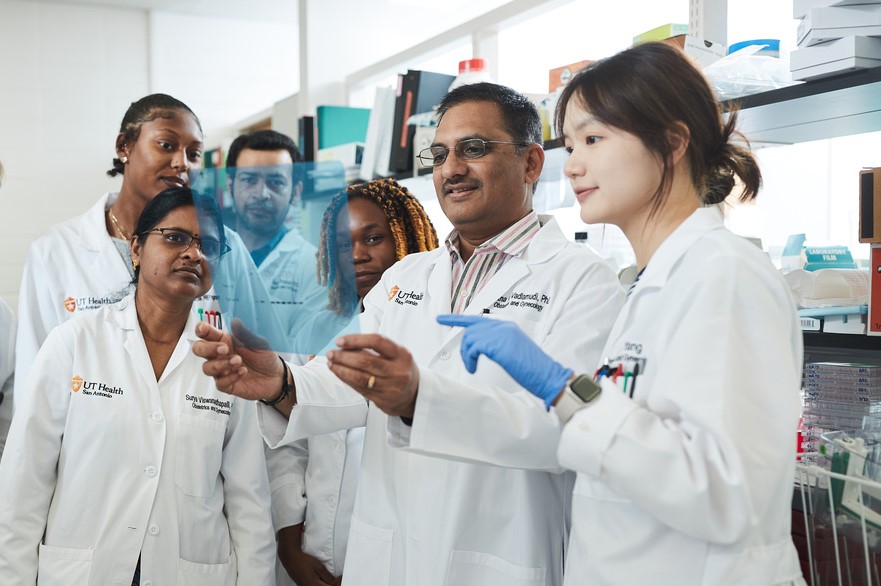Promising compound kills range of hard-to-treat cancers


— Ratna Vadlamudi, PhD, Professor and Vice Chair for Research, Department of Obstetrics and Gynecology
In 2017, Ratna Vadlamudi, PhD, a professor of obstetrics and gynecology at the Mays Cancer Center, identified a compound called ERX-11 that targets the estrogen receptor (ER), a protein that drives the vast majority of breast cancers. From a screen of chemical analogs of ERX-11, he and his colleagues identified that a compound called ERX-41 not only kills ER-positive cancers in petri dishes, but also readily kills triple-negative breast cancers (TNBCs) — including more than 20 distinct TNBC cell lines.
The researchers expanded these studies to show ERX-41 is efficacious against a large number of human tumors grown from cell lines in mouse models. In addition, ERX-41 was found to be potent against patient-derived xenografts as well, causing shrinkage of these human tumors without affecting normal breast cells or causing any discernible toxicity.
“The safety profile and high therapeutic index of this compound is particularly notable and bodes well for clinical translation,” Vadlamudi said.
Other experiments showed that in addition to ER-positive breast cancers and TNBC, ERX-41 is also effective against other cancer types with elevated endoplasmic reticulum stress, including pancreatic, glioblastoma and ovarian cancers, which all currently have few effective treatments.
“The range of cell lines and xenografts in which the compound is known to work indicates that it is targeting a fundamental vulnerability in cancer cells,” Vadlamudi said.
The findings, first published in Nature Cancer, could eventually lead to new drugs to fight these cancers. Plans are underway to move these drugs into clinical trials in 2023.

 Close
Close